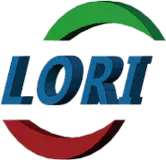A specially designed microchannel cold plate is directly mounted onto the processor chip and other high-power components, maximizing the elimination of thermal resistance from traditional integrated heat sinks (IHS) and thermal interface materials (TIM). Lori liquid cold plate uses advanced materials and micro-fin structures to achieve maximum contact surface area.
- Energy Storage System Thermal Management Solution
- Laser Thermal Solution
- Wind Power Converter Cooling Solutions
- Power Battery Cooling Solution
- Power Quality SVG Cooling Solution
- EV Controller Cooling Solution
- Energy Storage Inverter Thermal Solution
- Inverter Cooling Solution
- Data Center Cooling Solutions
- Motor Housing Thermal Solutions
- 5G Thermal Solutions
- Robot Cooling Solutions
- PTC heater solution
- Photovoltaic Inverter Thermal Solutions
- Data Center Cooling Solutions








